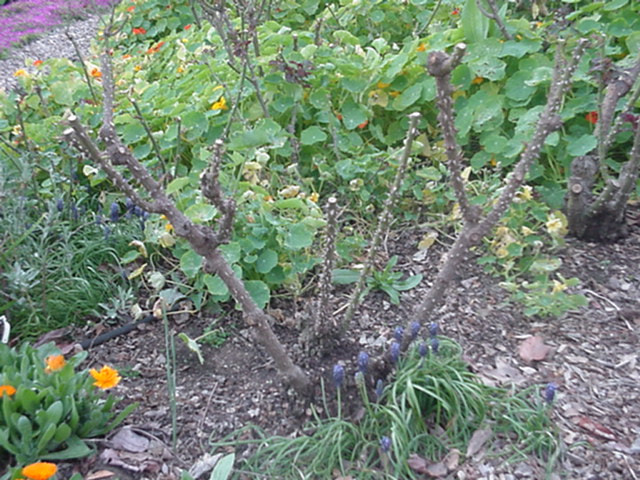| | This time of year is supposed to still be winter with its cold weather and therefore the annual time for pruning deciduous fruit and nut trees. But, of course, we barely had a couple days where the air temperatures went below 50 degrees, and now these weeks of over-80 degree weather have the fruit trees and roses blooming. So, do I prune or not? The short answer is YES, but hurry to accomplish the task. In fact, I feel this is the best time for beginning gardeners to prune, since they can actually see the buds and therefore determine where to cut. Basic Guidelines
Additional Points
Citrus Pruning citrus trees requires a different approach -- basically, remove only dead branches. Remove entire branches at the trunk. Heading branches back--cutting off only portions--will remove wood that would have blossomed and set fruit this coming season and stimulate more bushy growth. Berries Cane berries are most easily pruned when all their leaves have fallen off and the buds have just begun to fill out and show their light pink color. The dead canes and the plant structure are then quite apparent, and the thorns are more easily avoided. When clipping away all the dead growth, be careful to not injure the new pink shoots at the crown. Then prune each strong cane from the root crown just above its point of attachment to the top horizontal support of the trellis. Prune side shoots just after the third strong bud. Spread and re-anchor the upright canes evenly along the trellis in order to keep the area open for good ventilation and promote the even spread of developing foliage. This pruning and trellising procedure will encourage strong growth of fruiting vines but not of unnecessary foliage. Although cutting down all dead and growing vines at the soil level in a clean sweep is an easy approach, it encourages weak bushy growth with only a few berries setting very low on the plant. An acceptable variation of this easier approach would be to clean-cut half of the berry vines every two years. Then, you'll always have a year-old patch to bear fruit the following summer, and can clear the other patch by clean-cutting. Grapes Prune grape vines after all the leaves have dropped to make sure it’s fully dormant. The choice of pruning approach depends on the specific varieties and trellis structure you have. Generally, grapes will bear on second-year growth, so prune to encourage this. Pencil-sized grape cuttings with four nodes can be used to start new vines. To identify which end is which, cut the bottom (root end) of the cane flat and the top (foliage end) at a slant. Bury the lower two nodes in the soil or potting mix in a container. Don't be concerned if new foliage doesn't appear from the upper nodes until very warm weather, as the strong root system develops first. Roses Prune established roses even if they have not lost all their leaves. Remove crowded or crossed branches Open the center of the plant for good light exposure and airflow. This may take just flicking off some emerging buds pointed into the interior of the plant with your fingernail. Prune branches straight across just above a bud that faces outward or toward a side that needs filling in. Remove any leaves that have dead or diseased portions, and destroy (don't compost) them. Wait to prune climbers and old-fashioned roses with a single bloom cycle in the spring until following that bloom. |
|
2 Comments
|
Categories |








 RSS Feed
RSS Feed